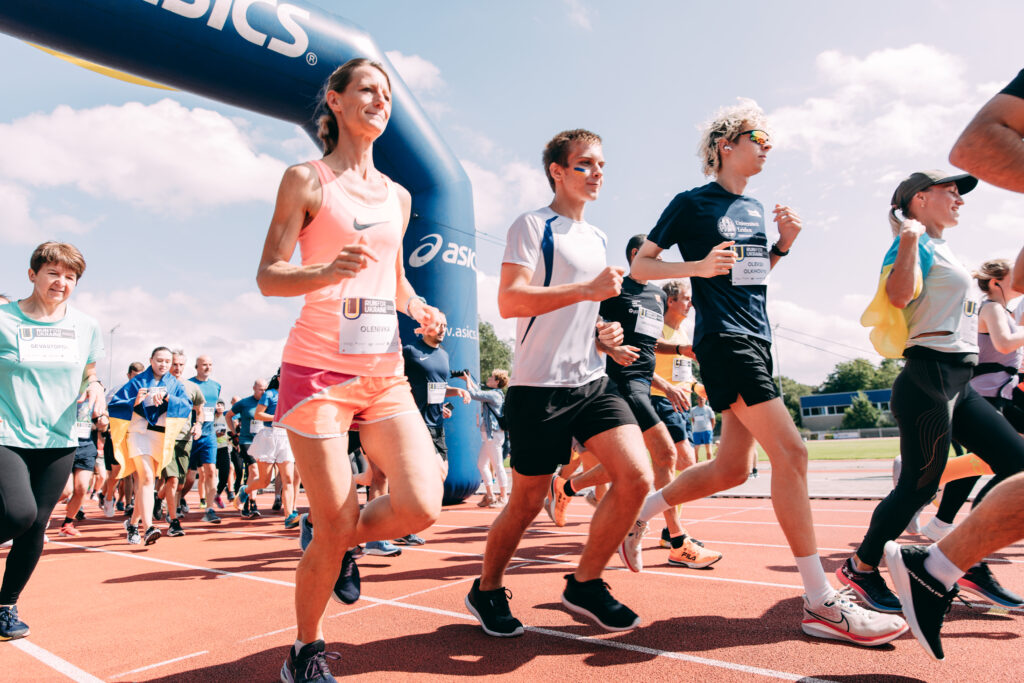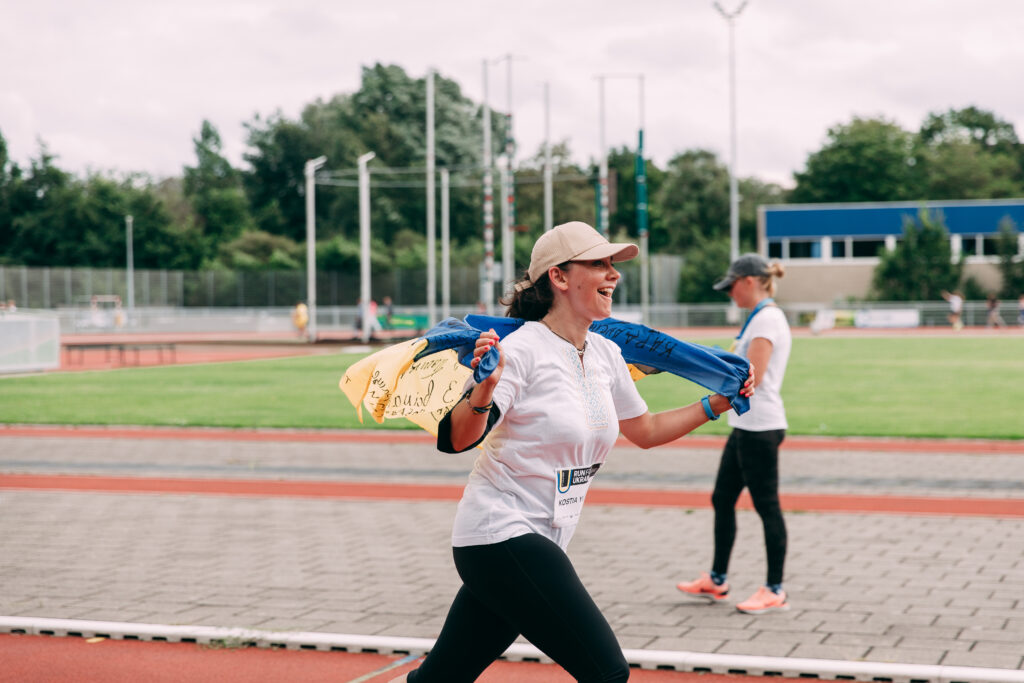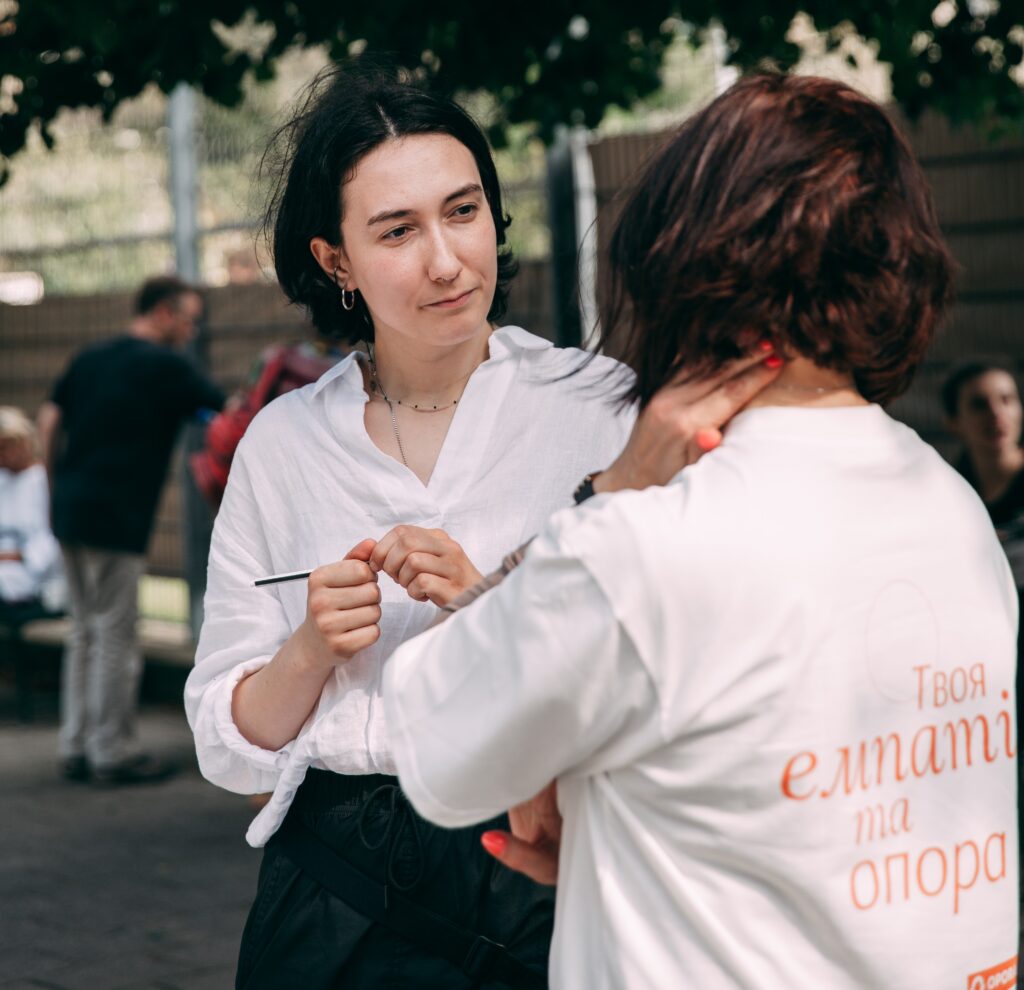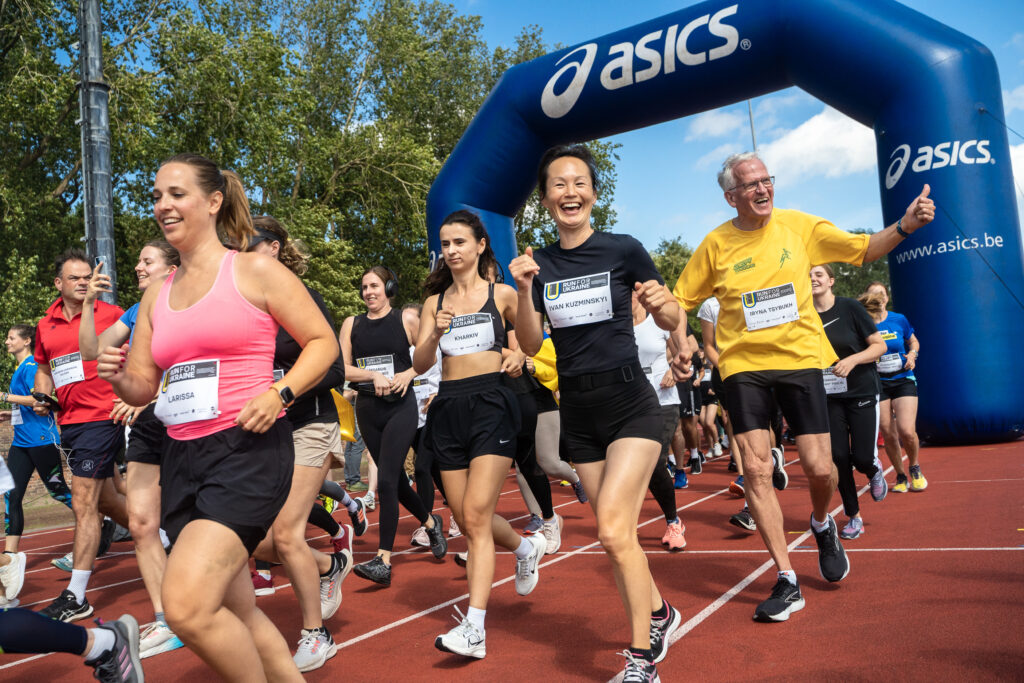
It isn’t a secret that the concept of memory is still relatively little understood by academic research, and one can perceive it through multiple lenses. Is memory a cognitive phenomenon that helps us to store and process information? Or rather, an embodied cognition that links us to bodily experiences? It’s arguably both, but for people who have suffered a constant traumatisation and experience it individually or together, memory can be regarded as a social construct.
Collective memory is the shared ability of a community to commemorate and pass on the experiences, tragedies, and victories that have shaped it. For Ukrainians, living through war means that this memory is not only personal but deeply social, a way of preserving identity, resisting erasure, and uniting in grief and resilience.

Ahead of VATAHA’s annual Run for Ukraine memorial run, which unites everyone in shared solidarity and grief, we set on a quest to discover how trauma showcases itself, how displaced Ukrainians relive traumatic memories as a group and how we can all together truly relive something that’s aching in our hearts daily. I embark on this journey alongside Eva Kardash, clinical psychologist and Empatia Program specialist with the OPORA Foundation.
What does it mean to remember?
As Eva puts it: “The nature of memory in the context of collective mourning among Ukrainians is deeply social, multidimensional and, at the same time, dynamic. In this sense, memory is not an individual but a social act.”
The Ukrainian people’s ability to commemorate the tragedies they have endured is also a field of struggle: russia wages its war not only for territory, but also to erase Ukrainian identity from collective memory. In this context, memory serves not only as a means of preservation but also as a means of resistance and restoration. It becomes a tool for Ukrainians to acknowledge their trauma and a mechanism for the international community to show its solidarity.

The beast of trauma
Ukrainians have shown enormous amounts of both physical and psychological strength, despite the grief-stricken memories of russia’s 11 years of territory invasion. Collective memory and collective trauma go hand in hand, but what’s more to it is our collective capability of suppressing and sometimes even forgetting traumatic memories.
Another aspect that plays along with collective silence is the unspeakable nature of trauma. At the moment of danger, the brain switches from speech to survival mode, and memory retains fragments of bodily sensations and images rather than a coherent narrative, switching off the verbalisation.
To some extent, going silent and repressing traumatic experiences is a natural protective mechanism. Instead of processing very painful events, people may consciously try not to think about them or, in some cases, unconsciously partially forget these events through psychological mechanisms such as dissociative amnesia. This helps to reduce emotional pain in the short term. In the long term, however, ignoring trauma does not help to overcome it. On the contrary, safely and gradually coming to terms with painful experiences is an important condition for recovery.
Movement as a cure
Nevertheless, our bodies have the ability to both stay silent and relieve stress. Movement is especially helpful in cases when words are not enough. Running activates the endocrine system, increasing levels of endorphins (the “happiness hormones”), serotonin, and dopamine. Running also helps relieve stress and anxiety, improves sleep, and enhances overall mental health—factors that are essential for full recovery after traumatic events.
But what’s potentially far more influential, moving together in a group has a special power, as it combines physical action with emotional and symbolic meaning, activating collective memory. Such movement becomes not just a gesture or action, but a way to reinterpret traumatic past events, giving them new form and meaning in a safe environment.

Run For Ukraine
That is why movement, especially when shared, can become a language of its own. Movement can do what words sometimes cannot. For Ukrainians living through war, running together has become a way to process grief, reclaim identity, and transform mourning into strength. This is exactly what happens at Run for Ukraine, our upcoming memorial run that gathers people not just to cover kilometres, but to move in unison for those we’ve lost, for the moments we cannot forget, and for the future we refuse to surrender.
Want to uncover more? This year, the Empatia Program will join Run for Ukraine as part of its cultural program for the second time. Eva Kardash and her colleagues will be available at their event stand with free mental health resources, printed materials, and small stress-relief devices to take home with you, with two psychologists on site for emergency support.
Join us this year to commemorate the fallen heroes and unite together in grief and hope.
Event Details:
Date: August 24, 2025
Location: Haag Atletiek, Laan van Poot, The Hague, Netherlands
Join us at Run For Ukraine here.
Learn more about the Empatia Program here.
Visit Eva’s website here.
About the author
Sofiia Maior is a writer and communication manager, studying Communication and Media in Rotterdam. Passionate about arts, culture, and storytelling, she explores themes of her interest through writing and painting. At VATAHA, she contributes editorial content and leads our social media agenda to embrace Ukrainian culture abroad. You can read Sofiia’s previous article about how Ukrainian embroidery helps preserve collective memory and cultural identity here.
